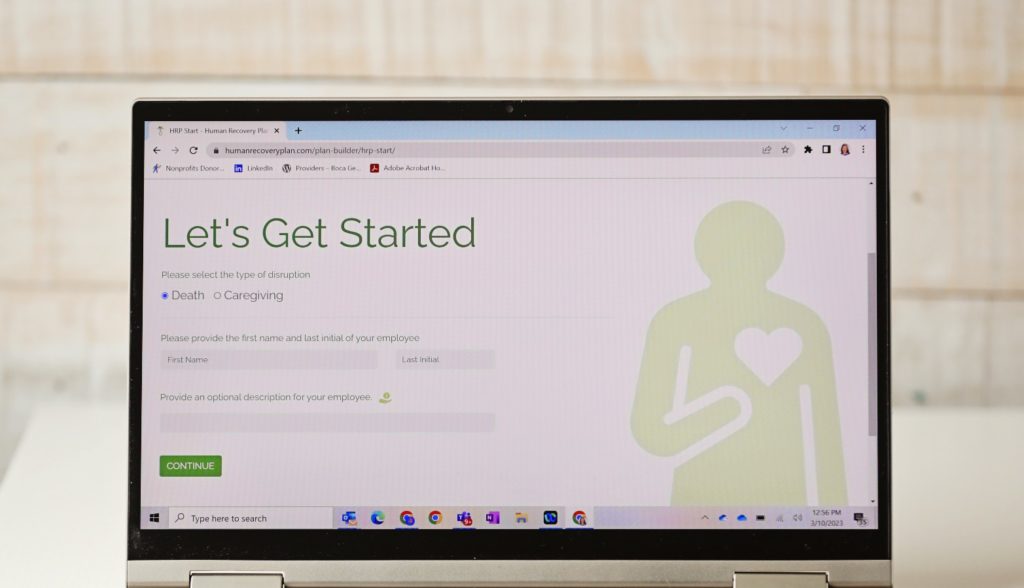
How Men Grieve: What’s Healthy & What’s Not
How we express grief is individual and can vary from person to person. But research indicates there are gender differences as well. Know what to look for as you develop your grief leadership strategy to support each individual employee.
Due to a combination of cultural messaging and biology, men are more likely to exhibit grief-related symptoms that are harder to detect in the workplace, which can lead to less support from their organization and subsequent health issues, productivity loss, and more. Here are the signs to watch for and the healthy behaviors to encourage as your employee navigates grief.
Learn more about how grief temporarily rewires the brain.
Work to distract.
Work can provide grievers with a sense of control when everything else in life feels messy and chaotic. Grieving men may work more to distract themselves from the emotional pain they’re feeling. It can become a problem if they use work to avoid dealing with their grief.
Workaholism occurs when a person prioritizes work over everything else in their life, including relationships, relaxing past-times, and hobbies they used to enjoy. Like alcohol, drugs, and other addictive behaviors, work can offer a distraction or an escape, numbing anxious thoughts and difficult emotions.
Working too much can easily go unnoticed in a culture that rewards hard work and achievement, but it can lead to on-the-job errors, lack of productivity (despite the appearance of busyness), and burnout.
√ Work with purpose.
 On the other side of the coin, spending time on a purposeful or meaningful project can be a healthy outlet for a griever. An employee may find relief in helping others or channeling his grief into physical activity like repetitive or strenuous exercise, yard work, or hands-on projects around the house.
On the other side of the coin, spending time on a purposeful or meaningful project can be a healthy outlet for a griever. An employee may find relief in helping others or channeling his grief into physical activity like repetitive or strenuous exercise, yard work, or hands-on projects around the house.
Some grievers experience a phenomenon called post-traumatic growth, which occurs when a griever experiences positive transformation or a renewed sense of purpose following a traumatizing event or loss. With post-traumatic growth, a griever will make sense of, or memorialize, their loss by drawing attention to a cause that’s important to them and in the process, help others in the community.
Read about three executives who experienced post-traumatic growth following the death of loved ones in our four-part series on post-traumatic grief.
Frequently ill and/or disengaged.
Rather than acknowledging their emotional pain, men may be more likely to focus on the physical symptoms they’re experiencing. Grief can manifest in the body as headaches, loss of appetite, fatigue, shortness of breath, nausea, frequent colds/illness, and chest pain.
Because health issues often lead to absenteeism, unsupported grief can result in an estimated 30 lost workdays each year (according to the Grief Recovery Institute) and can cost employers $150 billion each year.
But many people white knuckle through their symptoms and go to work even if they’re unable to work at normal capacity, resulting in presenteeism, which is when an employee is at work but not present emotionally. Presenteeism results in an estimated 57.5 lost workdays each year and costs employers $1,500 billion per year.
√ Taking time for self-care.
Grief is incredibly taxing on the mind, body and spirit. If your employee appears disengaged and unable to focus, encourage frequent breaks to stretch or go for a walk. Also, consider delegating some of your employee’s responsibilities to other team members temporarily.
 If your organization is arranging meals for your grieving employee, suggest that the team deliver healthy, nutritious meals.
If your organization is arranging meals for your grieving employee, suggest that the team deliver healthy, nutritious meals.
Physical touch helps the body release feel-good hormones like oxytocin, which boosts the immune system. To set a positive example for self-care in the workplace, consider hiring a massage therapist to come into the office and provide chair massages to your team one afternoon, or give your grieving employee a gift card for a massage therapist.
Isolation.
Loose social ties can mean that a griever is less likely to engage in healthy self-care practices. Because many men were raised to suppress their emotions and appear disciplined and in control, they may be more likely to bottle up their distress, which can lead to risk-taking behaviors like alcohol and drug abuse. Or, they may experience other health problems, like obesity, depression and heart disease—all of which can lead to early death.
Depression can show up differently in men too. While depression in a woman can manifest as fatigue, low energy and sadness, a depressed man may express anger and hostility instead of sadness.
Even though anger is more culturally acceptable among men, it can further isolate them in their grief, resulting in hurt feelings, misunderstandings, and a deterioration of relationships. “Men are often not given the tools or support to express vulnerable feelings,” writes Suzanne J. Smith, Ph.D. for Lakefront Psychology.
“Depression affects more than 6 million men in the U.S.
and men are 4 times more likely to die by suicide than women.”
– Mental Health America
√ Connection.
For anyone who is grieving, a reliable, supportive community network is essential to processing grief. In conversations with your employee, get a sense of their support network. Offer time to listen if your employee wants to share a story about their loved one or their anger about their loss.
“I’ve worked with men who report that when they’ve attempted to talk about their feelings or shed tears, they have felt rebuffed or gotten the message, subtly or overtly to be strong, ‘don’t cry,’ ‘suck it up,’ or ‘don’t make others uncomfortable,’” writes J. Scott Janssen, MSW, LCSW in his article “Understanding the Way Men Grieve.”
Don’t tell your employee how he should feel, which can lead him to shut down due to feelings of shame, guilt and distrust. Instead, tell him you are there for him and available if he wants to talk about it.
Want more ideas? The Human Recovery Platform™ provides you with a menu of tactics customized to your employee’s life disruption. Request a demo to learn more.

Editor’s note: This article is an update of the original piece published in June, 2022.
